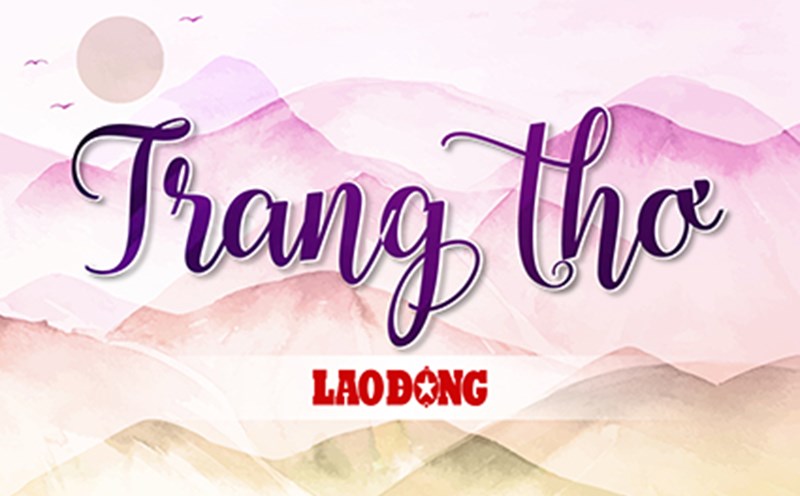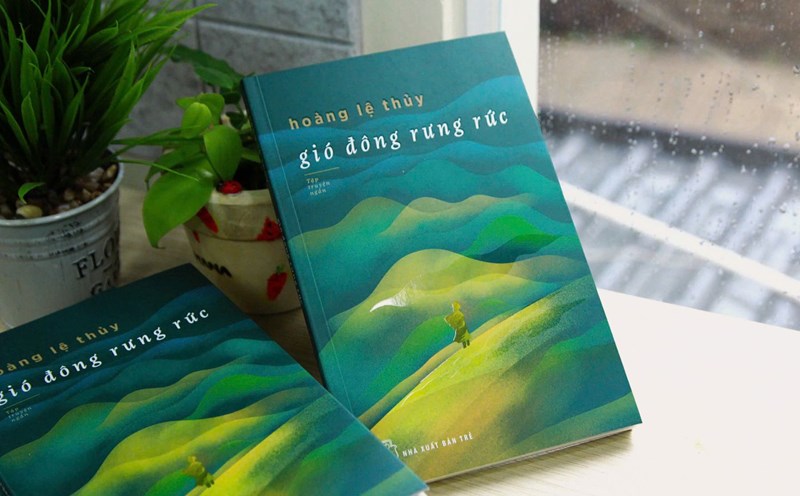Writing “The Sacred Child of the Forest”, writer Trung Trung Dinh was inspired by real characters against the backdrop of a special historical period of the nation. The main character of the book - the boy Sieu Dong - is a special son of the Central Highlands mountains and forests. Born in exile under the yoke of French colonialism and its henchmen, when he grew up, the young Ba Na Sieu Dong was enlightened by the revolution and walked on a new path, later becoming the painter Xu Man.
Painter Xu Man was born in 1925 in An Khe town. During his childhood, he had to work as a servant to pay off his master's debt. When he was young, he secretly helped the revolution and then joined the army in Gia Lai. In 1954, he was regrouped to the North and sent to study culture. In 1974, he completed his university degree and returned to his hometown to continue working. In 1983, he retired, returned to his hometown Bong village to live out his last days and passed away in 2007.
Throughout his life, he was assigned to many different jobs and always completed them. Despite his busy schedule, painter Xu Man always made time for his passion for painting. The main theme in his works is the heart of the Central Highlands people for Uncle Ho.
After finishing his paintings, artist Xu Man did not keep or sell them but gave them to friends and people. Up to now, his paintings have traveled all over Vietnam. Some of his works are still preserved in two large art museums in Hanoi and Ho Chi Minh City.
Writer Trung Trung Dinh had the chance to meet painter Xu Man and the two soon became close friends. They spent nights chatting around the fireside while the painter opened the pages of his past life.
The longer the journey, the clearer the idea of writing a book became in the author’s mind, urging him to write. “The Sacred Child of the Forest”, for that reason, is a story, though small in volume, but valuable. It is not only the first book written about the life of the great artist of the Ba Na ethnic group, called “The Sacred Child of the Forest” by the contemporary literary and artistic community of the Central Highlands, but also the crystallization of a simple yet strong friendship.
The stormy youth chapters of artist Xu Man - associated with a painful period of the Ba Na people, the Central Highlands people and the whole country of Vietnam - in the writings of Trung Trung Dinh have appeared very vividly and emotionally thanks to the writer's hard work in deeply researching and understanding the culture and customs of the Ba Na people and the Central Highlands ethnic groups.
From the way they walk, talk and laugh, their way of life, their way of thinking, their living habits, their festivals, to the tragedies they have had to endure. In this aspect, “The Sacred Child of the Forest” can be considered a book that opens the door for readers to learn about the culture and history of the development of the ethnic communities in the Central Highlands.
Talking about the artist Xu Man, writer Trung Trung Dinh shared in the book's introduction: "He himself is a spark in the forest, an artist nurtured by the forest village of the Ba Na people in the Central Highlands since birth, like the fire in the stilt house passed down from generation to generation, like a song telling about the fire and the life of the villagers. Fire is an obsessive passion for every living being.
The fire by the charcoal stove in his childhood nurtured Xu Man’s soul, taking him there and back, following him throughout his life. The fire in the stilt house stove nurtured souls and created the sparkling beauty of ethnic history, because prehistory follows prehistory to become history. And we “feed the fire” in our hearts because we understand that the future also participates in the sacred flow of history.”
Author Trung Trung Dinh shared: "This story is about a special person of the Central Highlands mountains and forests. Especially from the time he was born and grew up in the darkest period of his homeland, rising up with a strange vitality, with the survival instinct that only the Ba Na people at that time had; each step of the artist's life was a difficult step full of challenges and maturity. That is why he was called "The sacred child of the forest" by the contemporary literary and artistic community of the Central Highlands.
Writer Trung Trung Dinh, born on September 21, 1949, originally from Hai Phong. He graduated from the first course of Nguyen Du Writing School and worked as a prose editor for the Army Literature Magazine. Since 2000, he has held the position of Deputy Editor-in-Chief of Literature Newspaper before becoming Director of the Writers Association Publishing House. Writer Trung Trung Dinh has been a member of the Vietnam Writers Association since 1984. He won the A Prize in the Vietnam Writers Association's novel competition (1998 - 2000) with the novel Lost in the Forest. In 2000, his novel "Lin Tran" was awarded the Vietnam Writers Association Award. In 2007, he was awarded the State Prize for Literature and Arts. In 2012, the work "Lin Tran" continued to bring writer Trung Trung Dinh the ASEAN Literature Award.











